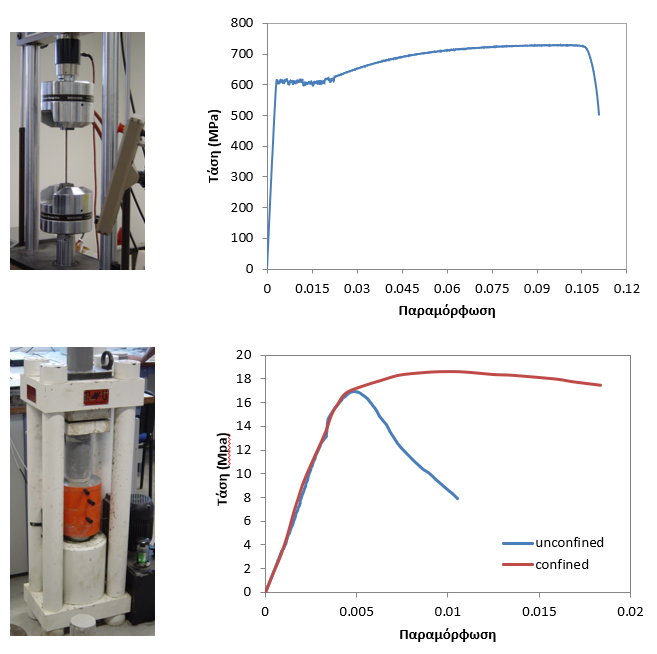| i. General principles of mechanics of materials: the concept of stress, basic concepts of axial and shear loading, strength-based design principles of structural members, the concept of deformation.
ii. Stress-strain relationships for structural members under axial loading, methods for calculating displacements, basic principles of analysis of statically determinate and indeterminate structural assemblies with axially loaded members. iii. Stress state in structural elements subjected to shear, general mathematical definitions for axial and shear strains, generalized stress-strain relationships in the three-dimensional stress state, applications to stressed thin shells. iv. Transformations of stresses and strains from one coordinate system to another. v. Basic concepts of theories of failure of materials. Introduction to the theory of torsion (cylindrical axial members under pure torsion). |
INTRODUCTION TO MECHANICS OF MATERIALS
| SEMESTER | 2nd |
|---|---|
| eclass | https://eclass.upatras.gr/courses/CIV1514/ |
| COURSE OUTLINE | |
| Instructor | PAPANICOLAOU CATHERINE |
| LANGUAGE OF INSTRUCTION and EXAMINATIONS | Greek |
| Credits ECTS | 6 |
| Erasmus+ | Yes |
| Code | CIV_3217 |
The course deals with the mechanical behavior of materials and structural members subjected to simple loading cases which result in tensile or compressive stress, shearing and torsion.
The aim of the course is to educate the first-year students of the Department of Civil Engineering in basic concepts of mechanics of materials, such as stress and strain, but also the relations between them for the simple cases of axial and shear stress (including the torsion of axisymmetric cross-sections) .
At the end of this course the student will have developed the ability to:
- solve problems regarding axially loaded members.
- compute the magnitude of shear stresses in problems of pure shear loading (including those referring to thin cylindrical or spherical shells under internal pressure).
- transform stresses and strains from one coordinate system to another.
- solve problems using theories of failure of materials.
solve problems regarding cylindrical axial members under pure torsion.





